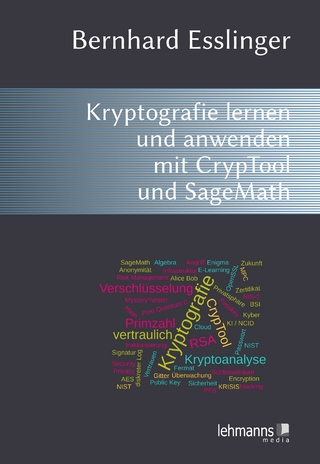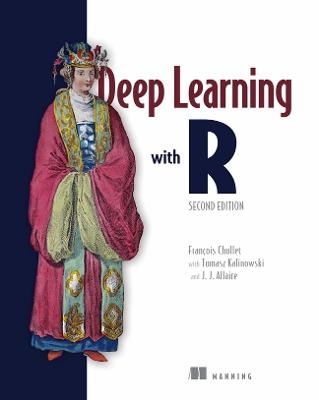
Graph Data Model
Springer Verlag, Japan
978-4-431-70058-6 (ISBN)
- Titel ist leider vergriffen;
keine Neuauflage - Artikel merken
1. Introduction.- 1.1 Motivation.- 1.2 Overview.- 1.3 Related Work.- 2. Graph Data Model.- 2.1 Overview.- 2.2 Schema.- 2.3 Elementary Data Operations.- 2.3.1 Record List.- 2.3.2 Restriction.- 2.3.3 Record List Projection.- 2.3.4 Projection.- 2.3.5 Link Creation.- 2.3.6 Link Operators.- 2.3.6.1 Grouping.- 2.3.6.2 Existential link operators.- 2.3.6.3 Numerical link operators.- 2.3.6.4 Transitive link operators.- 2.3.6.5 Formation of resultant record list type.- 2.3.7 Storage Operations.- 3. Data Definition Language.- 3.1 Overview.- 3.2 Schema Definition.- 3.2.1 Record Type Definition.- 3.2.2 Link Type Definition.- 3.2.3 Constraint Definition.- 3.3 Views.- 3.4 Schema Evolution.- 4. Data Manipulation Language.- 4.1 Overview.- 4.2 Volatile Object Definition.- 4.3 Record Selection and Creation.- 4.3.1 Variables.- 4.3.2 Record Selection.- 4.3.3 Path Expressions.- 4.3.4 Inter-Record Restrictions.- 4.3.5 Nested Path Expressions.- 4.3.6 Set Operators.- 4.3.7 Select Record Statement.- 4.3.8 Translation of DML Statements.- 4.3.9 Graph-Driven Interactive Query Interface.- 4.4 Link Selection and Creation.- 4.4.1 Select Link Statement.- 4.4.2 Connect Link Statement.- 4.5 Storage Operations.- 4.5.1 Add Record Statement.- 4.5.2 Add Link Statement.- 4.5.3 Delete Record (Link) Statement.- 4.5.4 Remove Record (Link) Statement.- 4.5.5 Replace Record Statement.- 4.5.6 Reconnect Link Statement.- 5. Implementation of GDL.- 5.1 Overview.- 5.2 Some Design Issues.- 5.3 DDL Processor.- 5.3.1 Functions of DDL Processor.- 5.3.2 Schema Definition.- 5.3.3 Record Definition.- 5.3.4 Attribute Definition.- 5.3.5 Link Definition.- 5.3.6 Constraints, Views, and Evolution of Schemas.- 5.4 Run-time System.- 5.4.1 Overview of Query Evaluation.- 5.4.2 Run-time Data Structures.- 5.4.3 Run-time Procedures.- 5.5 DML Precompiler.- 5.6 Access Paths and Other Environment-Dependent Factors.- 5.7 Query Processor.- 6. A Comparison of Access Path Strategies.- 6.1 Introduction.- 6.2 An Extension of Yao's Cost Model for Query Evaluation Algorithms.- 6.3 Costs of Query Evaluation Algorithms.- 6.3.1 One-Variable Queries.- 6.3.2 Two-Variable Queries.- 6.3.2.1 Case 1.- 6.3.2.2 Case 2.- 6.3.2.3 Case 3.- 6.3.2.4 Case 4.- 6.3.2.5 Case 5.- 6.3.3 Semi-joins.- 6.3.4 Three-Variable Queries.- 6.4 Conclusion.- 7. Conclusions.- 7.1 Contribution.- 7.2 Future Research.- Appendix A: BNF Grammar of GDL.- Appendix B: Specification of Run-time System.- B.1 File Structures.- B.2 Parameters and Variables.- B.3 IRST Procedure.- B.4 XRST Procedure.- B.5 EXT Procedure.- B.6 NEGEXT Procedure.- B.7 NUM Procedure.- B.8 TRN Procedure.- B.9 LNKCRT Procedure.- B.10 PROJ Procedure.- B.11 FETCH Procedure.- B.12 UNI, INTS, DIF Procedures.- B.13 RADD Procedure.- B.14 RDEL Procedure.- B.15 LADD Procedure.- B.16 LDEL Procedure.- B.17 PUSH Procedure.- B.18 POP Procedure.- B.19 RLPROJ Procedure.- B.20 GETREC Procedure.- B.21 GETIDX Procedure.- B.22 GETLNK Procedure.- B.23 GROUP Procedure.- B.24 SORT Procedure.- B.25 ASGNRL Procedure.- B.26 DELRL Procedure.- B.27 ASGNREC Procedure.- B.28 ADDREC Procedure.- B.29 DELREC Procedure.- B.30 ADDIDX Procedure.- B.31 DELIDX Procedure.- B.32 ADDLNK Procedure.- B.33 DELLNK Procedure.- B.34 SRCHTRE Function.- B.35 ADDTRE Procedure.- B.36 DELTRE Procedure.- Symbols and Abbreviations.
| Erscheint lt. Verlag | 7.9.1990 |
|---|---|
| Vorwort | Gio Wiederhold |
| Zusatzinfo | biography |
| Verlagsort | Tokyo |
| Sprache | englisch |
| Gewicht | 385 g |
| Themenwelt | Mathematik / Informatik ► Informatik ► Datenbanken |
| Informatik ► Theorie / Studium ► Algorithmen | |
| ISBN-10 | 4-431-70058-7 / 4431700587 |
| ISBN-13 | 978-4-431-70058-6 / 9784431700586 |
| Zustand | Neuware |
| Informationen gemäß Produktsicherheitsverordnung (GPSR) | |
| Haben Sie eine Frage zum Produkt? |
aus dem Bereich


